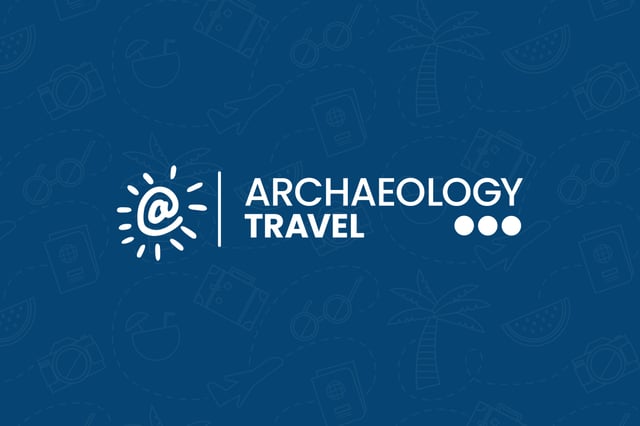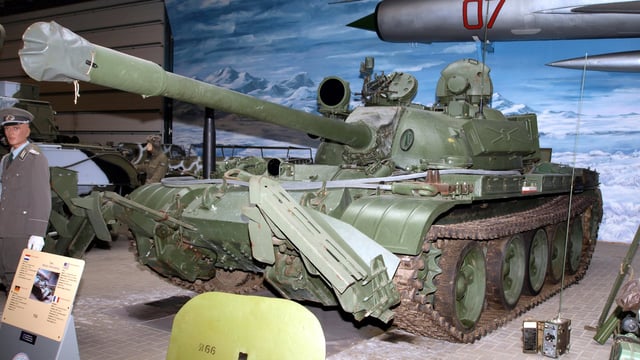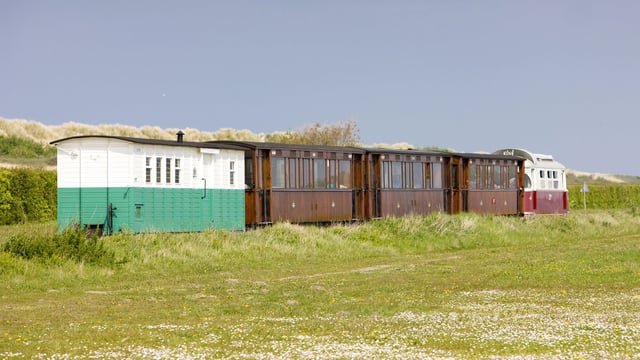Southern Netherlands
Art, History & Archaeology Sites & Museums
Including Limburg, North Brabant and Zeeland
This page, part of our Netherlands Travel Guide, provides details of the art, archaeology and history sites, museums and related attractions to visit in Southern Netherlands (Limburg, North Brabant and Zeeland). Readers wishing to visit these places will find visitor information, links to official websites as well as other helpful resources. The guide is produced and maintained by Thomas Dowson, an archaeologist and the founder of Archaeology Travel. Read more about the website, its authors and our work.
New to the Archaeology Travel website? Those who have an account (free of charge) can create personal travel lists and itineraries. To benefit fully from the various travel planning features, see the User’s Guide.
Archaeology & History Sites in Southern Netherlands
Basilica of Saint Servatius, Maastricht
Located on the Vrijthof in Maastricht, the impressive Basilica of Saint Servatius dates largely from the 11th and 12th centuries. Medieval church enthusiasts will be interested in its various Romanesque sculptural elements. The site itself has had an ecclesiastical presence for a longer period, with Saint Servatius reportedly buried here in 384, after which an early medieval structure grew up around it, later replaced by the present church. It remains an active place of Roman Catholic worship and hosts concerts throughout the year.

Bouvigne Castle
Bouvigne Castle existed in some form from at least the 16th century, when it is recorded in historical documentation. In 1614, William of Orange bought the property and transformed it in accordance with the Renaissance styles that were popular at the time, thus resulting in its present appearance. Although the castle, as well as its accompanying chapel and coach house, is unfortunately not open to the public, today’s visitors can still explore the three early 20th-century gardens, one each in the English, French, and German styles.

Bunkers at Burgh Haamstede
To the west of Burgh Haamstede are the remains of a vast and complex system of bunkers and underground shelters, interconnected by concrete tunnels. This was the command headquarters of the ‘Stützpunktgruppe Schouwen’. It was from here that operations over the entire Schouwen-Duiveland area were directed. The area played a crucial role in the final months of the war. In particular from 4 September until 8 November 1944 during the Battle for the Scheldt, when the Allies sought to take control of the route into Antwerp.

De Punt Bunkers - Widerstandsnest 220 H
The WWII complex bunkers at De Punt, Widerstandsnest 220 H, were entirely covered by the shifting dunes. Although the delta island of Goeree-Overflakkee delta was not strategically important, it was an essential part of the Atlantic Wall. The clear trajectory for cannon fire towards the entrance of the Grevelingen between Goeree and Schouwen called for a heavy infantry post here. Thanks to the work of volunteers, the complex of 15 bunkers is once again visible, and accessible throughout the year, with tours offered on memorial days.

Heeswijk Castle
Marking the spot where a motte-and-bailey fortification stood in the 11th-century, Heeswijk Castle displays a thousand years of architectural development. Over the course of the Middle Ages a defensive stone castle emerged, one that was besieged and conquered in 1629. In the 1830s, the wealthy baron André van den Bogaerde van Terbrugge assumed ownership of the castle and oversaw its further transformation with the addition of Neo-Gothic elements that help give it its fairy-tale appearance. Open since the 1950s, it showcases the lives of the elite individuals who resided here.

Netherlands American Cemetery and Memorial
The American cemetery in Margraten is the only American military cemetery in the Netherlands. In just over 65 hectares, 8288 American service men have been laid to rest. The names of a further 1722 soldiers who were never recovered are recorded on the walls of the Court of Honour at the entrance to the cemetery. At the centre of the Court is the memorial tower. In the visitor building large engraved maps illustrate the military operations of the American armed forces in the area.

Schaloen Castle
First recorded in 14th-century documents, Schaloen Castle remained in the same family for several generations before Louis of Nassau occupied it in 1574. Not long after, in 1575, Spanish troops demolished the castle, which was then rebuilt in the 17th century, with only a few Gothic elements surviving. In 1894, the Dutch architect P.H.J. Cuypers oversaw substantial renovations of the structure, resulting in its present Neo-Gothic appearance. Schaloen is now a private residence and hotel, offering visitors the rare opportunity to spend the night in a castle.

Temple of Nehalennia
Opened to the public in 2005, this structure in the Zeeland village of Colijnsplaat is a modern reconstruction of an ancient Roman temple. The original was excavated at nearby Ganuenta, which in the second century AD was a regional centre for trade on the fringes of the Roman Empire. The temple was originally dedicated to the local goddess Nehalennia; it is unclear whether this divinity was of linguistically Germanic or Celtic origin, but it appears likely that she attracted worship from speakers of both language groups.

Thermenmuseum
With the exposed remains of a public bath house, the museum tells the story of the Romans in south Limburg. In particular, Roman Heerlen or Coriovallum. This well preserved site covers an area of around 2500 m2 with some 500 m of walls. It is not only the best preserved Roman bath house in the Netherlands, it is the oldest stone building in that country. A suspended walkway allows you to get up close, and innovative display methods give 400 years of ancient bathing history.

Van Gogh Village of Nuenen
Among the most famous names in Dutch history is the Post-Impressionist painter Vincent Van Gogh. The Van Gogh Village of Nuenen comprises 23 outdoor buildings or landscapes associated with the artist, with visitors able to walk the streets where Van Gogh lived between 1883 and 1885. After visiting the Vincentre Museum, make your way around the village of Nuenen, discovering the 14 locations immortalised through depiction in Van Gogh’s artworks. At night, the cycle path is lit up to resemble one of Van Gogh’s most famous works, ‘The Starry Night’.

Museums & Art Galleries in Southern Netherlands
Eynderhoof - Limburg Open Air Museum
An open-air museum in Limburg, Eynderhoof showcases life in the region as it existed around the start of the 20th century. Located in a tranquil rural environment, the museum has been operational since 1990. Among its displays are a range of workshops, a farmhouse, a syrup distillery, a forge, and a sawmill, around which can be found a selection of gardens growing vegetables and native species, thus cultivating the impression of a village preserved from the past. Various traditional craft activities are displayed in the summer months.

Iron Age Farm, Dongen
Those fascinated by the Iron Age will not want to miss the reconstructed village of Dongen (IJzertijdboerderij Dongen) in North Brabant. Here can be found several timber structures built in styles believed to have been used during the Dutch Iron Age, as revealed by archaeological excavations at Beek and Donk. Activities like wood-working, pottery, and metalwork are carried out by volunteers in period costume. Largely catering to school groups, the site is also open to the general public on select days throughout the year.

Oorlogsmuseum Overloon
The museum is located on the site of the WWII Battle of Overloon between Allied and German forces in September and October of 1944. Opened on 25 May 25 in 1946 as the National War and Resistance Museum, this is one of the oldest museums in Europe dedicated to WWII. In the main exhibition hall there are over 150 examples of vehicles, planes and other large military equipment, many of which were used in various conflicts of the Second World War. A number of items relate to the Cold War in Europe.

Prehistoric Village, Eindhoven
The Prehistoric Village (preHistorisch Dorp) in Eindhoven, North Brabant helps to bring the ancient world to life. Despite its name, the open-air museum covers not only the Iron Age but also the Roman and medieval periods too. Reconstructed buildings created using archaeological data help set the scene, while interpreters dressed in period costume engage with visitors and showcase historic handicrafts as well as everyday activities like bread making and weaving. The open-air site is part of the Eindhoven Museum.

RTM Tram Museum
From 1898 to 1966 the RTM was the main company that provided both passenger and freight transport between Rotterdam and the islands of South Holland and Sealand. Modes of transport included trams, buses and ferries. In 1966 the RTM transformed into a transport museum, and with the same rolling stock visitors can take a tram ride through the dunes of De Punt van Goeree, over the Brouwersdam to Scharendijke.
















